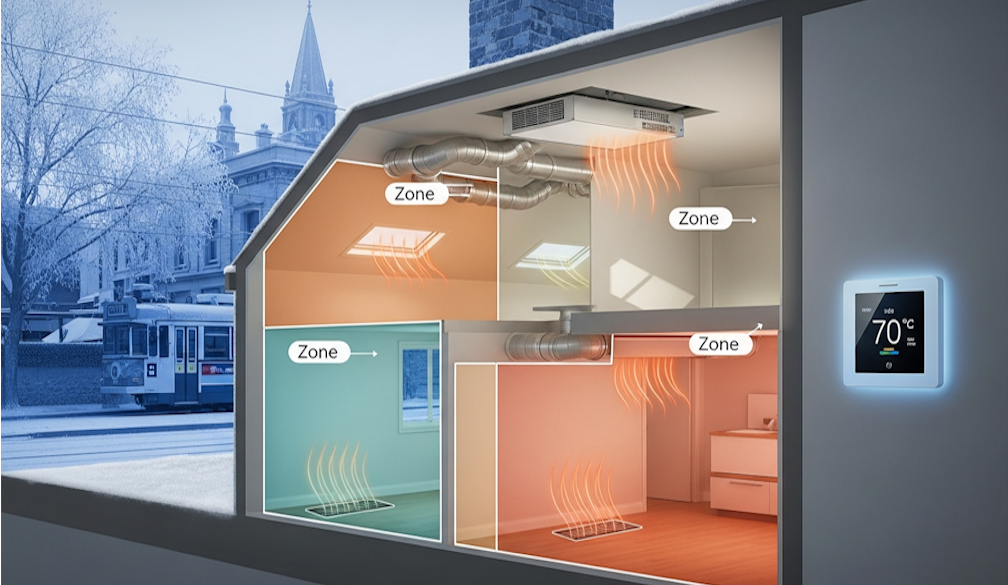which countries are likely to meet their Paris Agreement targets
- Written by Robert McLachlan, Professor in Applied Mathematics, Massey University
 CC BY-ND
Climate Explained is a collaboration between The Conversation, Stuff and the New Zealand Science Media Centre to answer your questions about climate change.
If you have a question you’d like an expert to answer, please send it to climate.change@stuff.co.nz
Which countries in the world have met or bettered their Paris Agreement targets?
The 2015 Paris Agreement is much more than a one-off climate change deal. Its main aim to limit global warming to well below 2℃, ideally 1.5℃, was a breakthrough.
A follow-up report shows that keeping warming below 1.5℃ will require reducing fossil fuel burning by half by 2032. The 1.5℃ target has been written into New Zealand’s Zero Carbon Act.
But the ongoing process is also notable. Each country has registered a pledge (Nationally Determined Contribution, or NDC) to indicate how it plans to meet the agreement’s terms.
Without climate action, we are heading for 4.5℃ of warming by 2100. Current pledges, if fully realised, take us to 2.8℃.
Read more:
The Madrid climate talks failed spectacularly. Here's what went down
Countries have complete freedom regarding their target and how to achieve it. The NDCs will be revised every five years, first in 2020, and are required to be increasingly ambitious over time. The idea is that the international community can check the targets against performance and global goals. Best practice can be shared, and poor performance exposed.
This flexibility made it possible to get the agreement through, but it can be confusing. Targets have been set for different dates, from different baselines and for different types of emissions.
Countries may have good reasons for setting weaker targets – they may be starting from a low base, like India. Or they may have unusual emissions, like New Zealand’s large proportion of agricultural methane.
Read more:
Climate explained: what each of us can do to reduce our carbon footprint
So for each country we can ask:
Does the target really reflect its highest level of ambition, as agreed in Paris?
Is it consistent with 2℃ or 1.5℃ of global warming?
Is it on track to meet its target?
Will it ratchet up its ambition in 2020?
Let’s look at two large emitters, the EU and US, together responsible for 47% of historic, and 24% of current, emissions.
EU 2030 target: 40% reduction from 1990 levels
The European Union is on track for a 48% reduction, partly due to a collapse of heavy industry in Eastern Europe in the 1990s and more recently from a phase-out of coal. Despite this, because of lack of action on transport and buildings, and an increasing reliance on natural gas, the EU has been rated insufficient by Climate Action Tracker, an independent research unit founded in 2009 and partly funded by the German Ministry for Environment.
Last week, the new president of the European Commission, Ursula von der Leyen, announced plans for the EU to increase the target up to a 55% reduction, along with sweeping implementation plans. Some European countries are moving faster: Denmark, already down 32% on 1990 levels, has this month legislated a 70% reduction by 2030.
US 2025 target: 26% reduction from 2005 levels
So far the US is down 11%. The Obama-era climate plan would have achieved the 2025 target, but is now being rolled back, and the US will leave the Paris Agreement on November 4 next year, the day after the elections.
On the other hand, city and state-level actions and the continued decline of coal mean some further reductions in emissions are likely.
Now let’s consider two rapidly growing emitters, China and India, responsible for 16% of historic and 33% of current emissions.
China target: peak emissions by 2030
China is well on track to achieve this. Emissions actually levelled off for five years before rising again in 2018. China is the world’s largest installer of renewable energy, but also the world’s largest consumer of coal. It also funds a lot of coal power stations in other countries. China has announced it will greatly strengthen its target next year.
India’s 2030 target: reduce emissions intensity relative to GDP to 33% below 2005 levels
India is well on track to meet this, having rapidly moved into solar energy. Its target involves an increase in total emissions, but should be seen in light of India’s very low emissions of only two tonnes of carbon dioxide per capita. This is compatible with the 2℃ target.
Australia 2030 target: 26% below 2005 levels
Australia is presently only on track for a 7% reduction. But a decrease in forest clearance has masked the fact that emissions from fossil fuel burning have increased and are projected to increase further, to 8% above 2005 levels by 2030.
Australia has become the world’s third-largest exporter of fossil fuels, behind Russia and Saudi Arabia. On the other hand, many state governments have set ambitious targets and made either aspirational or legal commitments toward zero emissions.
New Zealand 2030 target: 30% below 2005 levels
New Zealand is projected to reduce by 15% under current policies, with the difference to be made up by purchasing carbon units from overseas. This may set up a clash with the Zero Carbon Act, which requires that “emissions budgets must be met, as far as possible, through domestic emissions reductions and domestic removals.” However, these figures mask the fact New Zealand is, most unusually, using “gross-net” accounting. The 2030 target is for net emissions (that is, including the carbon sink of forests), but is measured against their 2005 gross emissions. The target allows net emissions to grow by up to 24% and is woefully unambitious.
Using a different methodology, taking into account each country’s situation, performance, and plans, the Climate Change Performance Index found that the top three countries are Sweden, Denmark and Morocco, and the bottom three are Taiwan, Saudi Arabia and the US. New Zealand is ranked 34th and Australia 53rd of the 58 countries assessed.
CC BY-ND
Climate Explained is a collaboration between The Conversation, Stuff and the New Zealand Science Media Centre to answer your questions about climate change.
If you have a question you’d like an expert to answer, please send it to climate.change@stuff.co.nz
Which countries in the world have met or bettered their Paris Agreement targets?
The 2015 Paris Agreement is much more than a one-off climate change deal. Its main aim to limit global warming to well below 2℃, ideally 1.5℃, was a breakthrough.
A follow-up report shows that keeping warming below 1.5℃ will require reducing fossil fuel burning by half by 2032. The 1.5℃ target has been written into New Zealand’s Zero Carbon Act.
But the ongoing process is also notable. Each country has registered a pledge (Nationally Determined Contribution, or NDC) to indicate how it plans to meet the agreement’s terms.
Without climate action, we are heading for 4.5℃ of warming by 2100. Current pledges, if fully realised, take us to 2.8℃.
Read more:
The Madrid climate talks failed spectacularly. Here's what went down
Countries have complete freedom regarding their target and how to achieve it. The NDCs will be revised every five years, first in 2020, and are required to be increasingly ambitious over time. The idea is that the international community can check the targets against performance and global goals. Best practice can be shared, and poor performance exposed.
This flexibility made it possible to get the agreement through, but it can be confusing. Targets have been set for different dates, from different baselines and for different types of emissions.
Countries may have good reasons for setting weaker targets – they may be starting from a low base, like India. Or they may have unusual emissions, like New Zealand’s large proportion of agricultural methane.
Read more:
Climate explained: what each of us can do to reduce our carbon footprint
So for each country we can ask:
Does the target really reflect its highest level of ambition, as agreed in Paris?
Is it consistent with 2℃ or 1.5℃ of global warming?
Is it on track to meet its target?
Will it ratchet up its ambition in 2020?
Let’s look at two large emitters, the EU and US, together responsible for 47% of historic, and 24% of current, emissions.
EU 2030 target: 40% reduction from 1990 levels
The European Union is on track for a 48% reduction, partly due to a collapse of heavy industry in Eastern Europe in the 1990s and more recently from a phase-out of coal. Despite this, because of lack of action on transport and buildings, and an increasing reliance on natural gas, the EU has been rated insufficient by Climate Action Tracker, an independent research unit founded in 2009 and partly funded by the German Ministry for Environment.
Last week, the new president of the European Commission, Ursula von der Leyen, announced plans for the EU to increase the target up to a 55% reduction, along with sweeping implementation plans. Some European countries are moving faster: Denmark, already down 32% on 1990 levels, has this month legislated a 70% reduction by 2030.
US 2025 target: 26% reduction from 2005 levels
So far the US is down 11%. The Obama-era climate plan would have achieved the 2025 target, but is now being rolled back, and the US will leave the Paris Agreement on November 4 next year, the day after the elections.
On the other hand, city and state-level actions and the continued decline of coal mean some further reductions in emissions are likely.
Now let’s consider two rapidly growing emitters, China and India, responsible for 16% of historic and 33% of current emissions.
China target: peak emissions by 2030
China is well on track to achieve this. Emissions actually levelled off for five years before rising again in 2018. China is the world’s largest installer of renewable energy, but also the world’s largest consumer of coal. It also funds a lot of coal power stations in other countries. China has announced it will greatly strengthen its target next year.
India’s 2030 target: reduce emissions intensity relative to GDP to 33% below 2005 levels
India is well on track to meet this, having rapidly moved into solar energy. Its target involves an increase in total emissions, but should be seen in light of India’s very low emissions of only two tonnes of carbon dioxide per capita. This is compatible with the 2℃ target.
Australia 2030 target: 26% below 2005 levels
Australia is presently only on track for a 7% reduction. But a decrease in forest clearance has masked the fact that emissions from fossil fuel burning have increased and are projected to increase further, to 8% above 2005 levels by 2030.
Australia has become the world’s third-largest exporter of fossil fuels, behind Russia and Saudi Arabia. On the other hand, many state governments have set ambitious targets and made either aspirational or legal commitments toward zero emissions.
New Zealand 2030 target: 30% below 2005 levels
New Zealand is projected to reduce by 15% under current policies, with the difference to be made up by purchasing carbon units from overseas. This may set up a clash with the Zero Carbon Act, which requires that “emissions budgets must be met, as far as possible, through domestic emissions reductions and domestic removals.” However, these figures mask the fact New Zealand is, most unusually, using “gross-net” accounting. The 2030 target is for net emissions (that is, including the carbon sink of forests), but is measured against their 2005 gross emissions. The target allows net emissions to grow by up to 24% and is woefully unambitious.
Using a different methodology, taking into account each country’s situation, performance, and plans, the Climate Change Performance Index found that the top three countries are Sweden, Denmark and Morocco, and the bottom three are Taiwan, Saudi Arabia and the US. New Zealand is ranked 34th and Australia 53rd of the 58 countries assessed.
Authors: Robert McLachlan, Professor in Applied Mathematics, Massey University



















